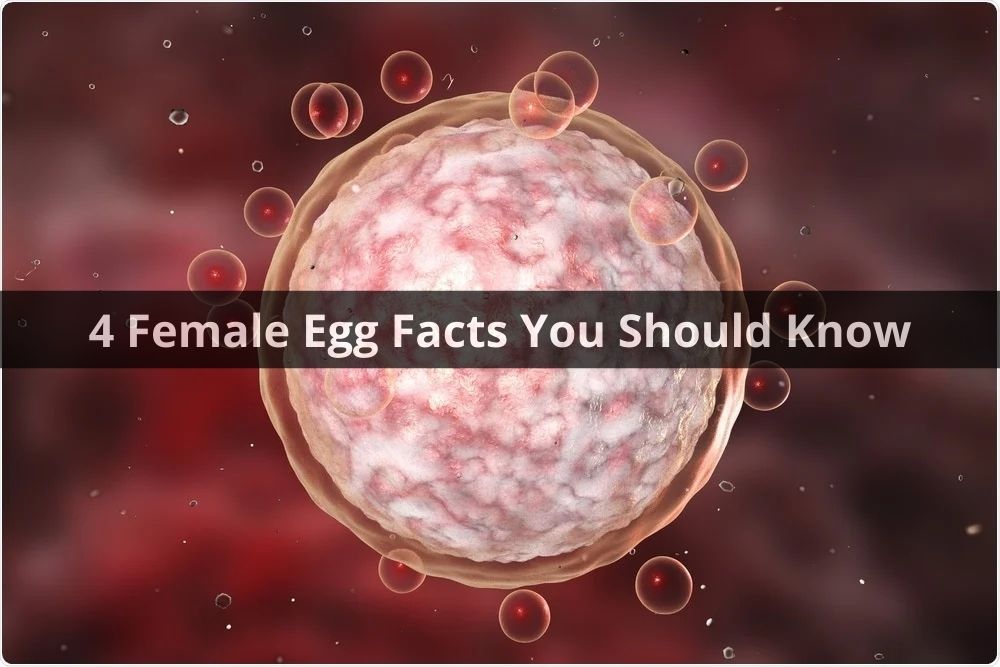Today we want to share with you 4 interesting facts about female egg. Many of us know little about the size and origin of the female egg, and the role it plays during fertilization.
Because the female egg is a very complex and interesting cell, it is always the subject of scientific research. Combining with sperm, the egg forms the structure of the fetus, and little is known about its structure and function, which makes the egg even more interesting to us. Today we want to share with you 4 interesting facts about these eggs.
What is Female Egg?
The egg is a female sex cell or gametes essential for the reproductive process. When this egg meets the male sperm, a structure called a zygote is created and a fetus is born.
The process of ovulation occurs approximately every 28 days, during which a structure called a follicle inside the ovary develops and releases cells called oocytes. And over time, the cells pass through the uterine tube and develop into an egg.
This complex process is the result of hormonal changes that occur every month. What is important here is the correct functioning of the hypothalamic-pituitary-ovarian axis, which releases important substances that can cause changes in the female reproductive system.
Facts About Female Egg
As you know, the Female egg is an excellent cell. Today we know more about eggs than ever before. But scientists are still discovering new and surprising facts about how female eggs work.
So, below are some of the most interesting facts about female eggs.
- Ovum development begins before birth
The follicle has a very complex structure. They actually have a number of “evolutionary forms” that change depending on the development of a girl or woman.
When a baby girl is born, she has hundreds of thousands of follicles called primordial follicles. However, because there are not many hormonal signals to activate them, most of these follicles remain dormant or begin to die slowly.
Then, as the girl grows up, hormonal changes follow. At this time, the follicle is activated and the egg begins to be produced through ovulation. However, most follicles between birth and puberty are not useful. For this reason, women have a lower reproductive age than men.
- The Female egg is much bigger than the sperm
It really is! The average size of sperm is only about 0.05 mm, but eggs are about 0.15 to 0.17 mm in size. Isn’t that surprising? This size difference is not related to the number of genes in the two cells. Because both should have the same number, half of the genes of every cell in the body.
Perhaps these differences have to do with the role each plays in the fertilization process. Sperm must pass through the vagina and inside the uterus to find the egg, which is possible because of the specific structure and size of the sperm.
- Ovulation doesn’t always happen on the same side
Each menstruation releases only one egg. A woman has two ovaries on each side and thousands of active follicles capable of producing eggs. However, it can be difficult to understand how the body functions so that only one of these follicles functions every 28 days.
This process is the result of tremendous hormonal changes produced by the hypothalamus or pituitary gland as well as the ovaries themselves. These cells are so complex that even today we do not fully understand how the process is initiated and regulated.
Also, this process is so precise that in some women ovulation alternates from side to side. That is, ovulation on the left side this month, ovulation on the right side next month, and so on. Perhaps this happens so that fertility can be maintained even if one of the ovaries is permanently damaged.
- You may have a period without ovulation
From a medical point of view, this is known as the “anonovulatory cycle,” and this problem is a major cause of infertility. So, what is the reason why women can’t release eggs properly?
This is mostly due to hormonal problems. Polycystic ovary syndrome is an example, and clinically, patients with this disease tend to be overweight, have acne, have facial hair, and have irregular menstrual cycles.
Conclusion
The Female egg, like sperm, is a very special and interesting cell. And above all, it has unique characteristics that cannot be found in any other cell.
Therefore, it is good to manage gynecological diseases well through obstetrics and gynecological examinations.

